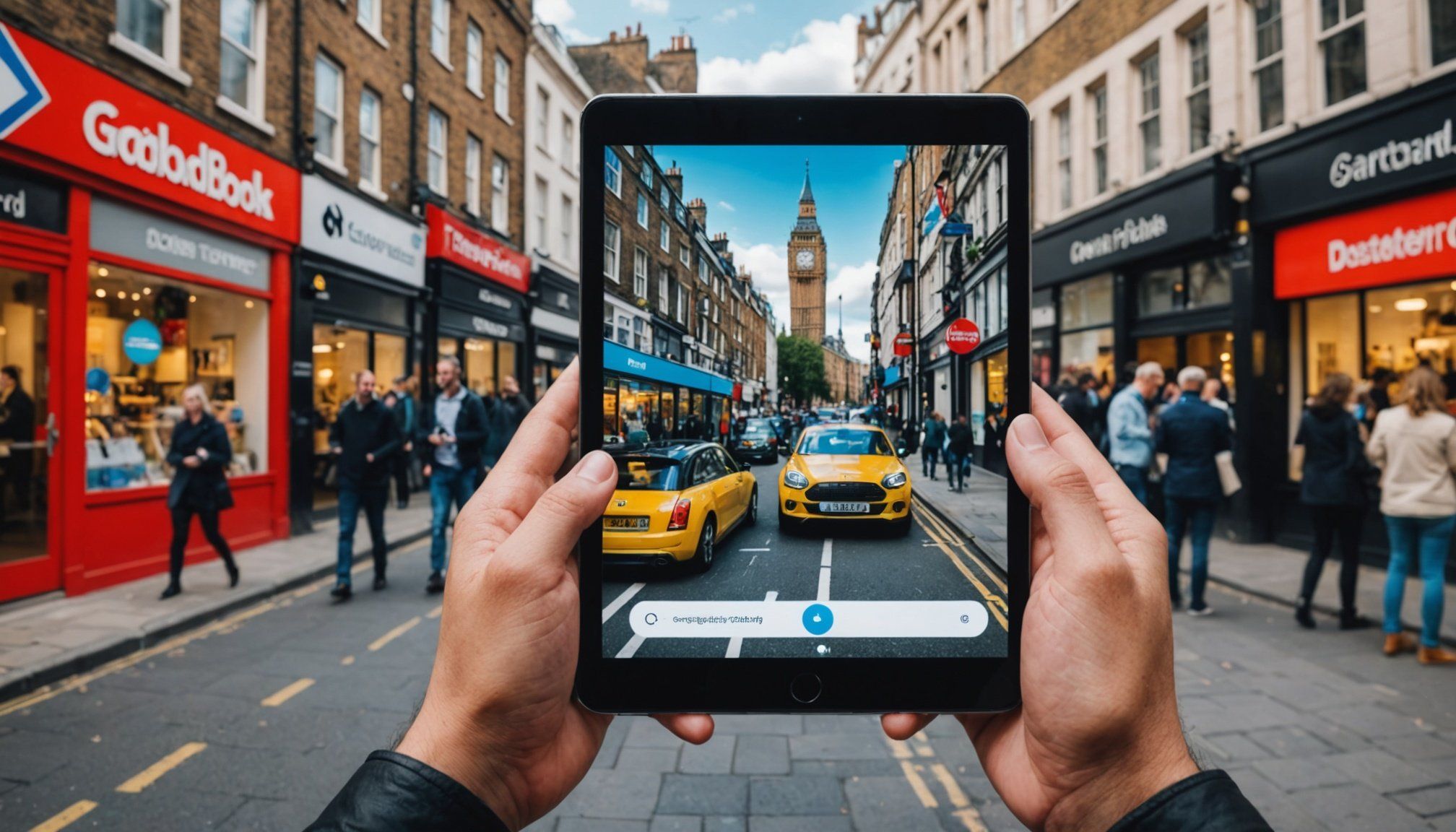Overview of Augmented Reality in Marketing
Augmented Reality (AR) has emerged as a transformative tool in the marketing landscape, offering innovative ways to engage consumers. By overlaying digital content onto the physical world, AR enhances user interaction, providing immersive experiences that captivate attention. This technological shift is significant as it bridges the gap between digital and physical realms, allowing brands to create more engaging and memorable marketing campaigns.
Recent trends show a spike in AR adoption across industries, with sectors like retail, real estate, and entertainment spearheading its use. Retailers, for instance, use AR to offer virtual try-ons, enhancing the shopping experience by allowing customers to visualize products in real-time. This trend is part of a broader movement towards personalized and interactive marketing strategies that resonate with today’s digital-savvy consumers.
This might interest you : Essential Components for a Strong Cybersecurity Strategy in UK Healthcare
However, the integration of AR in marketing isn’t without its challenges. From technical constraints to ensuring seamless user experiences, businesses face several hurdles. Yet, the benefits—such as increased customer engagement, brand loyalty, and innovative storytelling—often outweigh these challenges. As AR technology continues to evolve, its role in marketing is set to expand, making it an essential component of future marketing strategies. Brands must stay informed about AR advancements to leverage this marketing technology effectively.
Innovative AR Strategies for Campaigns
In the realm of creative marketing, brands employ a plethora of innovative campaigns to captivate consumers. One standout example is Pepsi’s “Unbelievable Bus Shelter,” which ingeniously used AR to create extraordinary scenes at a regular bus stop. Through the bus shelter’s glass, passersby saw real-time digital overlays of alien invasions and wild animals, making the mundane wait engaging and memorable. Such AR engagement emphasises how ordinary settings can be transformed into compelling brand interactions.
Have you seen this : Revolutionizing UK Retail: Cutting-Edge Data Analytics Strategies for Personalized Customer Journeys
Another innovative strategy is furniture retailer IKEA’s “Place” app. With this AR application, customers can visualise how furniture fits and looks in their space before purchasing. This not only fosters a personalised shopping experience but also builds trust and reduces buyer’s remorse, showcasing how practical AR applications enhance decision-making.
For a truly immersive experience, some brands incorporate gamification into their AR strategies. Take Pokémon Go, for instance. The game combines real-world exploration with captivating digital creatures, seamlessly integrating entertainment and marketing.
Crafting successful AR campaigns hinges on interactivity and engagement. Brands must focus on creating immersive environments that invite users to interact with content naturally. To achieve memorable experiences, these campaigns should be intuitive, reduce friction, and encourage user participation, ensuring sustained consumer interest.
Case Studies of Successful AR Campaigns
Delving into AR case studies reveals the transformative power of innovative applications in marketing. We begin with Brand A’s Interactive Experience. This strategy employed AR to craft an engaging journey, allowing users to interact with digital elements seamlessly. The campaign resulted in increased brand engagement and customer satisfaction, demonstrating the potential of AR in storytelling and consumer interaction.
Brand B’s Virtual Try-On illustrated the potency of AR in personalising shopping experiences. Customers were able to “try on” products virtually, such as clothing or cosmetics, boosting purchase confidence. This approach not only reduced returns but also strengthened customer loyalty. The success measurement hinged on metrics like enhanced online conversion rates and sustained user engagement.
In our third case, Brand C’s Gamified Campaign, harnessed the allure of gamification. By integrating AR into an engaging game, the brand drove user participation, fostering a deeper emotional connection. This campaign’s success was evident in user retention rates and overall brand visibility improvement. Through these successful campaigns, key takeaways include the necessity of clear objectives and adaptability. Metrics such as customer interaction time and feedback integration prove crucial in evaluating AR’s impact, confirming its potential as a revolutionary marketing tool.
Practical Tips for Implementing AR in Marketing
Implementing Augmented Reality Marketing strategies can significantly enhance consumer engagement. To commence, a step-by-step approach is essential. Businesses should first identify clear objectives—what do they hope to achieve with AR? This helps streamline the AR implementation process, ensuring efforts align with the company’s broader marketing goals.
Tools play a pivotal role in creating engaging AR experiences. Platforms such as Vuforia, ARKit, and Unity offer robust solutions for designing and deploying AR content. These tools simplify the integration of AR, catering to varying levels of technical expertise. For businesses new to this marketing technology, starting with platforms that provide pre-built AR templates can be advantageous.
To optimize AR experiences for maximum user engagement, consider these tips:
- Prioritise user experience: Designs should be intuitive and user-friendly.
- Include clear calls-to-action: Guide users towards desired interactions.
- Test and iterate: Gathering user feedback is critical for improvement.
Moreover, regularly updating AR content keeps experiences fresh and relevant. As AR strategies evolve, staying adaptable allows marketers to refine their approaches and maintain consumer interest. Conclusively, integrating AR provides a dynamic way for brands to innovate, engage, and stand out in a competitive landscape.
Trends and Future of AR in Marketing
Augmented Reality (AR) technology is rapidly transforming the marketing landscape. As industries continuously explore future trends in AR, significant advancements can be expected. Emerging applications are becoming increasingly sophisticated, integrating seamlessly into consumer interactions. This evolution in AR technology highlights opportunities for brands to enhance experiential marketing.
Looking ahead, predictions for AR’s future suggest further personalization and interactivity are imminent. We anticipate augmented reality will become a mainstream tool for businesses to engage customers in more dynamic ways. From offering bespoke experiences to providing real-time customisation, the potential of AR in enriching consumer interactions is vast and promising.
The impact of technological advancements in AR will likely drive more immersive and engaging marketing strategies. As AR hardware and software improve, such innovations are expected to lower barriers to entry, making AR accessible to smaller businesses. Moreover, as AR content creation becomes more user-friendly, marketing teams might leverage these tools for more streamlined deployment of creative campaigns.
Keeping abreast of these marketing insights is vital for businesses aiming to incorporate AR into their strategies. By understanding the evolving capabilities of AR, companies can harness its full potential, offering cutting-edge experiences that resonate with audiences.
Challenges in Adopting AR for Marketing
Implementing Augmented Reality Marketing comes with its unique set of challenges, often needing businesses to address several Marketing Challenges. One prevalent issue is the barriers to implementation, such as high costs and limited technical expertise, which can hinder small and medium businesses from adopting AR swiftly. Moreover, ensuring the technology is user-friendly and effortlessly integrates into current systems is vital but often difficult.
To navigate these hurdles, companies can consider a phased AR Adoption approach, allowing gradual integration and testing. This strategy helps in mitigating cost burdens and complexity, as businesses can expand AR features over time based on feedback and improvements. Collaboration with tech partners or utilizing third-party platforms can provide the necessary technical expertise.
Aligning AR initiatives with overarching marketing goals is crucial for a cohesive strategy. Setting clear objectives ensures AR deployment complements existing campaigns, enhancing value rather than fragmenting efforts. Furthermore, continuous monitoring and adapting to user feedback ensure long-term success.
Investments here can lead to innovative solutions, eventually elevating customer engagement. As nearby tech communities grow, more resources and networks are becoming available, making it feasible to overcome these adoption barriers and fully realize AR’s potential.











